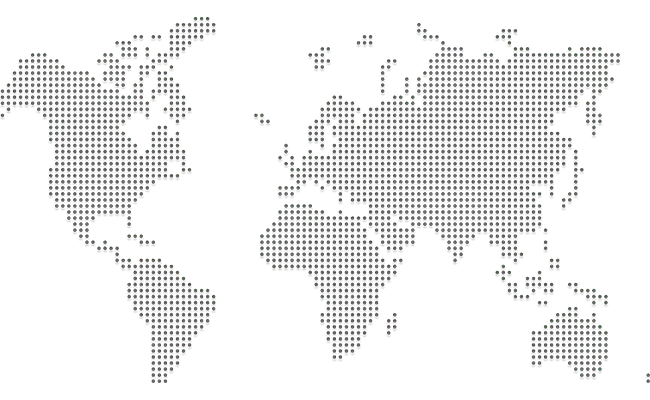IoT in Real Estate: Creating Smarter Living Spaces Across Pakistan

Introduction
The Internet of Things (IoT) has become a cornerstone of modern real estate, enabling everything from smart home features to intelligent building management. In Pakistan, where urban growth is rapid and consumer expectations are evolving, IoT offers a unique opportunity to enhance lifestyle, safety, and energy efficiency in both residential and commercial spaces.
Innovative developments like Falaknaz Greens, One Beverly, and The Mega Mall are beginning to embrace IoT-powered solutions to deliver a seamless, tech-enhanced living experience. As the demand for smart real estate rises, understanding how IoT is shaping the market is essential for buyers, investors, and developers.
What Is IoT in Real Estate?
The Internet of Things (IoT) refers to a network of interconnected devices that collect and exchange data to automate systems. In real estate, this includes:
Smart thermostats, lights, and appliances
Security systems like cameras and motion detectors
Utility meters and leak detectors
Central building management systems
Connected elevators, HVAC, and energy panels
These devices communicate with one another and with users via apps, creating intelligent environments that adapt to user needs.
How IoT Is Changing Real Estate in Pakistan
1. Smart Apartments with Personalized Controls
Projects like One Beverly are integrating IoT to offer:
Lighting and AC that adjust automatically
Voice-commanded home assistants
Mobile app-based controls for curtains, locks, and alarms
Residents enjoy comfort, security, and energy efficiency—all managed from their smartphone or tablet.
2. Efficient Energy Management
IoT sensors monitor energy consumption and optimize resource use. At Falaknaz Greens, this means:
Automatic light dimming in low-traffic areas
Real-time alerts for energy spikes
Data-driven electricity billing
Over time, these systems significantly reduce utility costs and the community’s carbon footprint.
3. Enhanced Security Systems
IoT-based security in gated communities or commercial hubs like The Mega Mall includes:
Smart cameras with facial recognition
Motion sensors and glass-break detectors
Smart access control systems for residents and staff
Panic buttons connected to centralized security teams
This provides 24/7 intelligent surveillance and peace of mind for residents and tenants.
4. Predictive Maintenance and Smart Facility Management
IoT enables automated diagnostics for critical building components like:
Elevators
Water pumps
Fire alarms
HVAC systems
For example, if a pump in One Beverly shows signs of failure, the system alerts the management before a breakdown happens—ensuring minimal disruption and reduced maintenance costs.
5. Smart Parking and Traffic Management
Large mixed-use projects like The Mega Mall can offer:
IoT-based parking availability indicators
Automated ticketing and barrier control
License plate recognition for VIP access
Data analytics on traffic patterns
This results in faster entry/exit, improved visitor experience, and optimized parking usage.
Benefits for Buyers and Residents
Convenience: Control your home from anywhere
Energy Efficiency: Lower utility bills
Security: Real-time monitoring and alerts
Customization: Set schedules and routines for lights, appliances, and climate
Value: IoT features increase property desirability and resale potential
Benefits for Developers and Investors
Operational Efficiency: Automated maintenance tracking and energy management
Marketing Advantage: “Smart Home” label adds brand value
Cost Savings: Predictive maintenance reduces long-term expenses
Data-Driven Insights: Monitor usage patterns to improve building performance
Investor Confidence: High-tech properties command better returns
Projects like Falaknaz Greens are examples of communities where such systems translate directly to stronger investor interest.
Challenges to Adoption in Pakistan
While the technology is available, developers face hurdles:
Lack of standardization among devices
High initial investment in smart infrastructure
Limited consumer awareness
Data privacy and security concerns
Despite these challenges, as awareness grows and costs fall, IoT will become a standard expectation, especially in premium developments.
Future of IoT in Pakistani Real Estate
The next decade will likely see:
AI-integrated IoT systems that learn user habits
Green IoT for sustainability and energy compliance
Voice-controlled property platforms
Biometric access control in apartments and offices
IoT-based insurance where premiums adjust based on usage and risk data
Projects like One Beverly and The Mega Mall are leading the charge by creating digital ecosystems that adapt, protect, and serve their communities intelligently.
Final Thoughts
The integration of IoT in real estate is more than just a trend—it’s a strategic necessity for developers aiming to meet modern expectations. With the rise in demand for smart living and efficient urban solutions, projects that adopt IoT will stand out in Pakistan’s increasingly competitive market.
For homebuyers, tenants, and investors alike, choosing IoT-enabled properties like Falaknaz Greens, One Beverly, and The Mega Mall means stepping into the future of real estate—where your property doesn’t just shelter you, it thinks with you.


